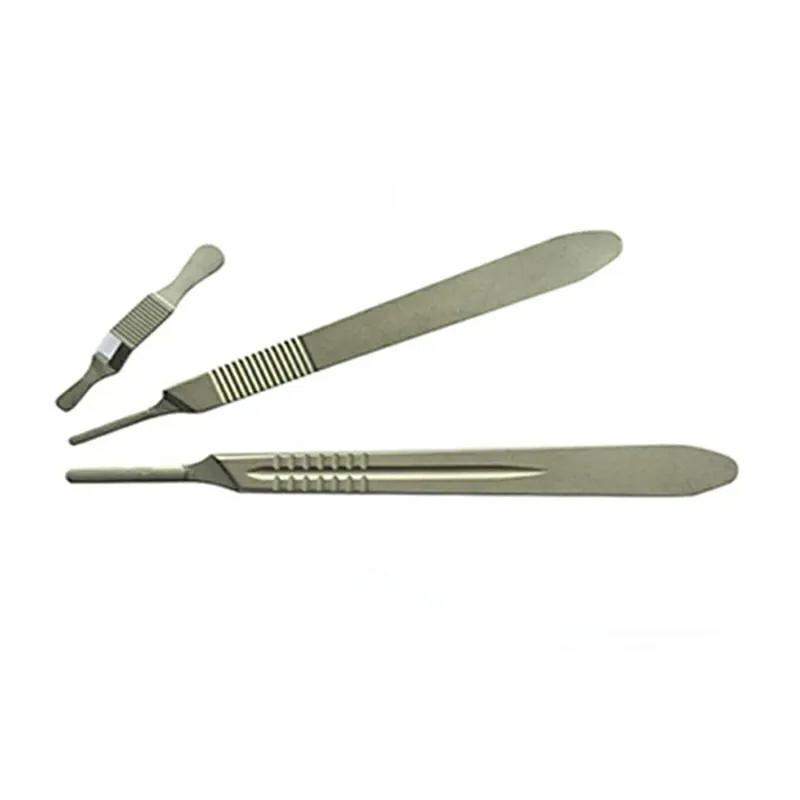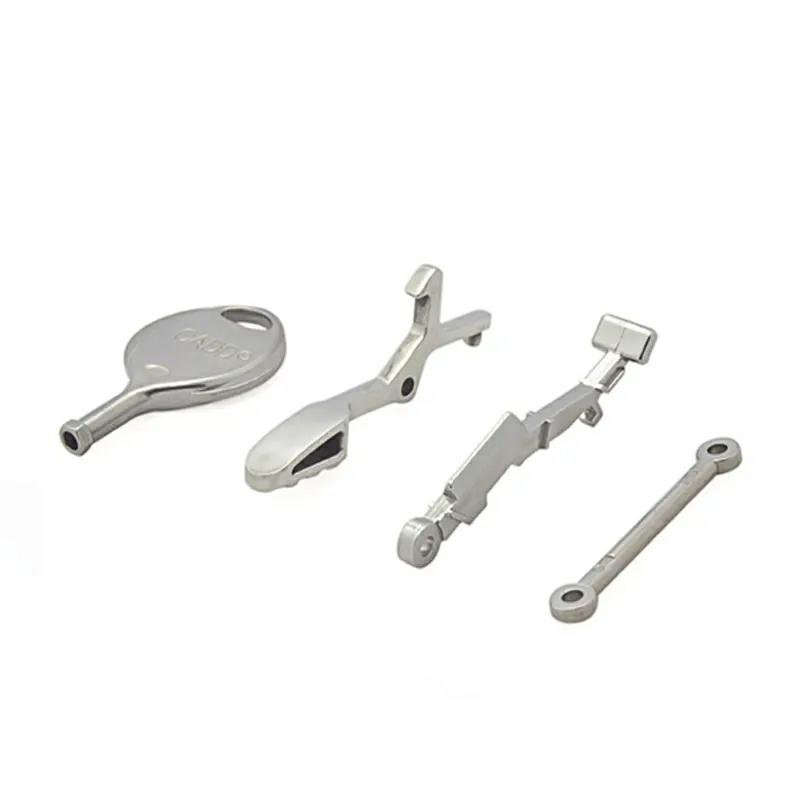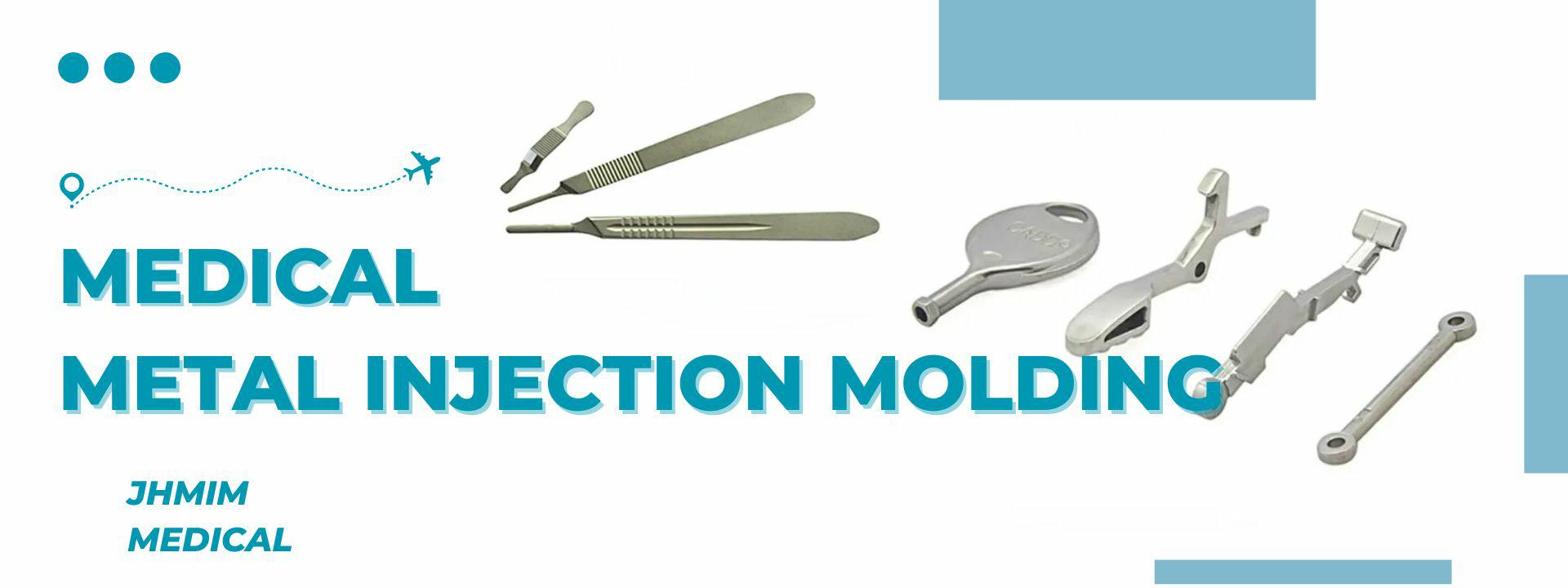Introduction
Metal Injection Molding (MIM) has emerged as a revolutionary manufacturing process, especially in the medical industry. Combining the versatility of plastic injection molding with the strength and integrity of metal, MIM allows for the creation of complex, high-precision components that meet the stringent requirements of medical applications. This article explores the advancements MIM brings to medical device manufacturing, the impact on surgical instruments, and the revolutionizing effects on implantable devices, delving into the intricacies of materials, precision, and the overall benefits of this innovative technology.

Advancements in Medical Device Manufacturing
Precision and Miniaturization
Precision is paramount in the medical field, where even the smallest deviations can have significant consequences. MIM excels in producing components with intricate geometries and tight tolerances, making it ideal for manufacturing small, complex medical devices. The process allows for the creation of parts with fine details and smooth finishes, essential for devices such as endoscopic instruments and minimally invasive surgical tools. The miniaturization enabled by MIM not only enhances the functionality of these devices but also improves patient outcomes by reducing the invasiveness of medical procedures.
Cost-Effectiveness and Scalability
Cost is a critical factor in the medical industry, where high-quality components are often expensive to produce. MIM offers a cost-effective alternative to traditional manufacturing methods like machining or casting. By using metal powders and injection molding techniques, MIM reduces material waste and labor costs. Furthermore, MIM is highly scalable, making it suitable for large-scale production. Medical companies can benefit from economies of scale, leading to significant cost savings without compromising on quality. Case studies have shown that companies using MIM for mass production of medical components have achieved substantial cost reductions, allowing them to invest more in research and development.
Material Versatility and Performance
The medical industry demands materials that are not only biocompatible but also possess excellent mechanical properties. MIM accommodates a wide range of materials, including titanium, stainless steel, and cobalt-chrome, all of which are suitable for medical applications. These materials offer superior strength, corrosion resistance, and biocompatibility, ensuring the safety and longevity of medical devices. For instance, titanium is often used in orthopedic implants due to its high strength-to-weight ratio and compatibility with the human body. MIM’s ability to work with such materials ensures that medical devices meet the rigorous standards required for patient safety and performance.
| Instrument | Type of Stainless Steel |
| Cutting | |
| Chisels | 302, 303, 410, 416, 420, 440 |
| Curettes | 302, 303, 410, 416, 420 |
| Cutters, bone-cutting forceps, | 420 |
| Dissectors | 410, 416, 420 |
| Knives | 302, 303, 420, 440 |
| Osteotomes | 410, 440 |
| Reamers | 410, 630 |
| Rongeurs | 410, 420 |
| Scalpels | 420, 440 |
| Scissors | 410, 420, XM-16 |
| Noncutting | |
| Cannulae, needle vents | 302, 303, 304 |
| Forceps | 302, 303, 304, 410 |
| Retractors | 302, 303, 304, 410, 416, 420, 431, 440 |
| Specula | 302, 303, 304, 316 |
| Spreaders | 302, 303, 304, 410, 416, 440 |
| Clamps | 303, 304, 410, 416, 420 |
| Drills | 303, 440, XM-16 |
| Handles | 303, 304 |
| Hammers, mallets, rulers, screws, tunnelers | 303 |
| Punches | 303, 410, 416, 420 |
| Skin hooks | 303, 410, 416, 420 |
| Suction tubes | 303, 304 |
| Probes, tongs | 303, 440 |
| Holders | 304, 410 |
| Clip applicators, dilators | 410 |
| Elevators | 410, 420 |
| Burrs | 420F |
| Orthopedic instruments | 430 |
| Needles | 420, XM-16 |
| Table I. Types of stainless steels used for medical instruments.1 | |
Impact on Surgical Instruments
Enhanced Durability and Sterilization
Surgical instruments must withstand repeated use and sterilization without degrading in performance. MIM enhances the durability of these instruments by producing components with uniform microstructures and superior mechanical properties. The process also allows for the incorporation of features that facilitate easier sterilization, such as smooth surfaces and minimal crevices where contaminants could accumulate. Real-world examples include MIM-produced scalpels and forceps, which have demonstrated improved durability and ease of sterilization compared to their traditionally manufactured counterparts.
Customization and Innovation
Customization is a growing trend in the medical field, driven by the need for patient-specific solutions and innovative treatment methods. MIM supports this trend by enabling the production of custom surgical tools and implants tailored to individual patient needs. Surgeons can collaborate with manufacturers to design tools that improve surgical precision and outcomes. Innovations such as modular instruments, which can be easily assembled and disassembled, are made possible through MIM. Case studies highlight the development of innovative surgical tools, such as specialized clamps and retractors, which have significantly improved surgical procedures.
Reduced Lead Times and Supply Chain Efficiency
In the fast-paced medical industry, reduced lead times and efficient supply chains are crucial. MIM offers shorter production cycles compared to traditional manufacturing methods, allowing for quicker turnaround times. This efficiency is particularly beneficial for medical providers who require timely delivery of surgical instruments to meet urgent needs. Additionally, MIM streamlines the supply chain by reducing the number of manufacturing steps and consolidating production processes. The result is a more efficient and reliable supply chain, which helps medical providers maintain consistent inventory levels and respond rapidly to market demands.
| Material | Implant Applications |
| 316L | Bones, plates, screws, staples, pins, and nails |
| Co-28Cr-6Mo | Prosthetic replacements of hips, knees, elbows, shoulders, ankles, and fingers |
| Unalloyed Ti | Bone plates, screws, rods, and staples |
| Ti-6Al-4V | Prosthetic hips, knees, elbows, shoulders, ankles, and fingers |
| Unalloyed Ta | Wire, foils, sheets, clips, staples, and meshes |
| Table III. Materials used for medical implants12 | |

Revolutionizing Implantable Devices
Biocompatibility and Patient Safety
Biocompatibility is a critical consideration for implantable devices, as these components interact directly with human tissues. MIM ensures high biocompatibility by utilizing medical-grade materials such as titanium and stainless steel, which are well-tolerated by the body. The process also allows for the production of implants with smooth surfaces and precise dimensions, reducing the risk of adverse reactions and improving patient safety. Examples of MIM-produced implantable devices include dental implants, orthopedic screws, and cardiovascular stents, all of which have demonstrated excellent biocompatibility and performance.
Design Flexibility and Patient-Specific Solutions
The flexibility of MIM in creating complex shapes and structures is a significant advantage for developing patient-specific implants. Traditional manufacturing methods often struggle to produce customized implants with the required precision and complexity. MIM overcomes these challenges by enabling the production of implants tailored to individual anatomical structures. The process begins with detailed imaging and modeling, followed by the creation of molds that match the patient’s specific needs. Success stories include custom hip and knee implants that have significantly improved patient mobility and quality of life.
Long-Term Reliability and Performance
Implantable devices must perform reliably over extended periods, often for the patient’s lifetime. MIM ensures long-term reliability through rigorous testing and quality assurance processes. Components produced through MIM undergo extensive mechanical testing, fatigue analysis, and biocompatibility assessments to ensure they meet stringent medical standards. Real-world applications, such as spinal implants and prosthetic joints, have demonstrated the long-term reliability and performance of MIM components, providing patients with durable and effective solutions.

Advanced Materials and Precision Engineering
High-Performance Materials
MIM’s capability to utilize high-performance materials is a game-changer for the medical industry. Materials such as titanium, cobalt-chrome, and stainless steel offer exceptional strength, corrosion resistance, and biocompatibility. These properties make them ideal for a wide range of medical applications. For instance, titanium is favored for orthopedic and dental implants due to its excellent osseointegration properties, while cobalt-chrome is used in load-bearing implants such as knee and hip replacements.
Precision Engineering and Tolerances
Precision engineering is critical in the medical field, where even minor deviations can impact device performance. MIM excels in achieving tight tolerances and complex geometries, ensuring that components fit perfectly and function as intended. The process allows for the creation of intricate features and fine details that are challenging to achieve with traditional methods. Comparisons of precision levels show that MIM can achieve tolerances as low as a few micrometers, making it suitable for high-precision medical devices.
Surface Finish and Coatings
The surface finish of medical devices plays a vital role in their performance and longevity. MIM offers various techniques to achieve the desired surface finish, including polishing, coating, and passivation. These processes enhance the corrosion resistance, wear resistance, and overall durability of MIM components. For example, titanium implants often receive a hydroxyapatite coating to promote bone growth and improve osseointegration. MIM’s ability to produce components with superior surface finishes ensures that medical devices perform reliably and safely in clinical settings.
Conclusion
Metal Injection Molding is transforming the medical industry by offering unparalleled precision, cost-effectiveness, and material versatility. Its impact on medical device manufacturing, surgical instruments, and implantable devices is profound, enabling innovations that improve patient outcomes and streamline healthcare processes. As MIM technology continues to advance, its potential to revolutionize the medical field grows, making it an essential tool for medical device manufacturers. By embracing MIM, the medical industry can achieve new heights of innovation, efficiency, and patient care.
Related resources:
Titanium Medical –TITANIUM 3D PRINTING



